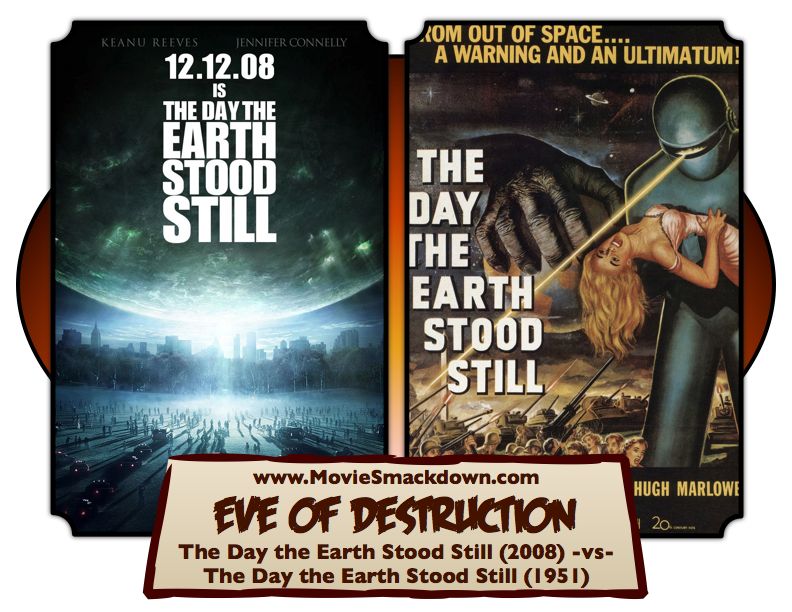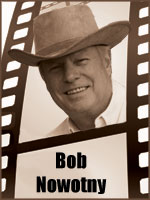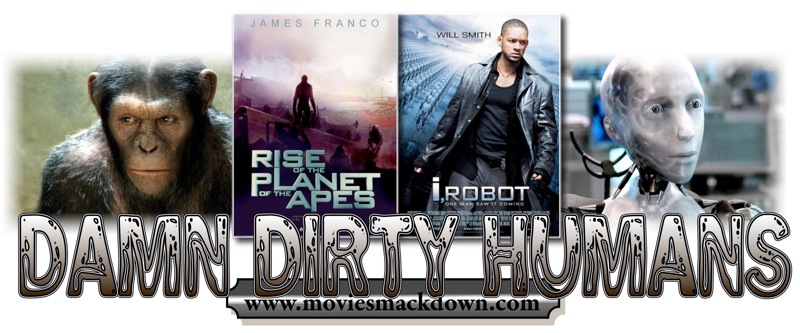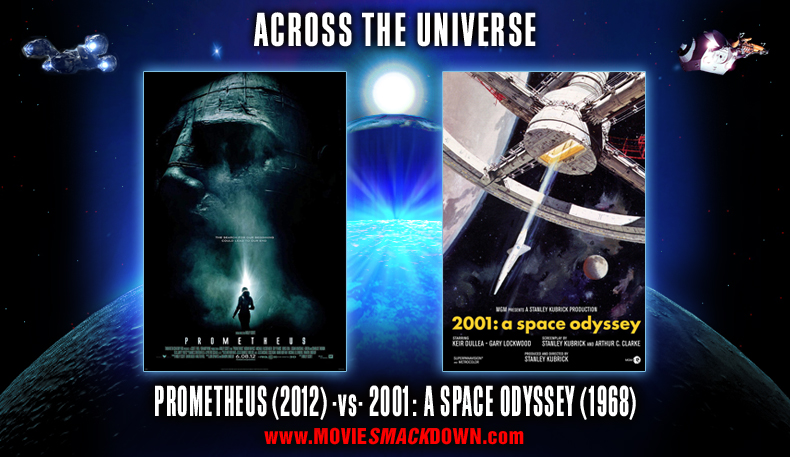
 The Smackdown
The Smackdown
A few years ago, Klaatu and Gort made their way back to the ‘hood, thanks to the mega-budget re-make of The Day The Earth Stood Still. The duo arrived, over five decades after the original, with every intention of forcing some extra-terrestrial “tough love” on us.
Keanu Reeves stuck his chest out and stepped into the lead role made famous in 1951 by Michael Rennie, joined in this go-round by Jennifer Connelly, Kathy Bates, and surprisingly, John Cleese. Certainly, the overall production and effects budget makes possible images never even imagined back in near post-war filmmaking.
But can all this money and contemporary talent add up to make this new The Day The Earth Stood Still as enduringly memorable as the old The Day The Earth Stood Still that graced the world’s screens during the height of Cold War paranoia?
[singlepic id=655 w=320 h=240 float=right]
The Challenger
The talent behind the revamped 2008 The Day the Earth Stood Still is certainly respectful of the original. Director Scott Derrickson, producer Erwin Stoff, and screenwriter David Scarpa have all publicly commented on how they understand that the earlier version is an acknowledged classic. Most film enthusiasts do actually fully realize that, generally speaking, remakes are about as successful as a Libertarian running for office in the Lone Star State. This is something that I sadly acknowledge having tried it in 2010 and found that my potential constituents preferred that I stay on the job here at the Smack.
This is not an absolute. On rare occasions, a remake actually fares pretty well against the original. Sorcerer compares favorably with Wages of Fear, for example, as does The Magnificent Seven with The Seven Samurai and The Birdcage vis-a-vis La Cage aux Folles. Accordingly, the number of deviations from the earlier edition have been held to a minimum. Gort is now a biological form and not a mechanical robot. Likewise, Klaatu is now an alien in a human body, not an alien with a human body. And, of course, the balance between story and special effects, between character-driven moments and action sequences, has been skewed as well, reflecting the advances in filmmaking technology, and presumably, present-day audience preferences. Being the challenger against a movie that most sci-fi affecinadoes consider to be sacrosanct, the equavlaent in its genre to what The Godfather is to gangster movies, is a tough undertaking. But then again, a beagle did win at Westminster…
[singlepic id=16 w=320 h=240 float=right]
The Defending Champion
This is arguably the greatest science fiction film of all time. Don’t take my word for it — none other than the Library of Congress and the National Film Preservation Board agree, since the original The Day The Earth Stood Still was selected for inclusion in the National Film Registry as one of America’s most significant cinematic achievements, one that “continues to have enduring cultural, historical and aesthetic significance.” This distinguished honor is not only well deserved, it is also a fitting tribute to a great filmmaker, Robert Wise, who set out to defy convention and to author something truly special.
I wanted to make the picture as real, as believable and as honest as I possibly could so that whatever happened from outer space would blend smoothly into something with which everyone could identify. My goal was to make a movie rather than a science fiction movie per se.
To accomplish this, Wise concentrated on telling a rather simple story of an alien humanoid and the circle of ordinary people with whom he comes into contact. Additional credit must go to Edmund H. North, the terrific screenwriter who also brought us the Academy Award-winning screenplay for Patton, and of course, to Harry Bates upon whose short story the screenplay is based. The net effect is a powerful, thought-provoking viewing experience which strikes a responsive chord with virtually everyone who sees it. Michael Rennie stars as Klaatu (in a role originally written for Claude Raines), and his superb performance as the distinguished extraterrestrial messenger is both convincing and chilling. The always reliable Patricia Neal and Sam Jaffe (in his last role during the McCarthy era) more than hold their own as well. Throw in an evocative musical score by Bernard Hermann, solid technical credits throughout, and a scintillating pace thanks to the streamlined storytelling, and the original The Day The Earth Stood Still remains a champion, even in this post-Matrix world.
The Scorecard
The very best science fiction films accurately reflect the tenor of the times in which they are produced. In the case of the original The Day the Earth Stood Still, we find an audacious allegory for the 1950s chilling concern over the escalating tensions of the early Cold War era and nuclear proliferation. And it hit home by placing the onus on all of mankind, not just the feared Ruskies, but on every American as well. This central theme, where humanity is portrayed as having an inherent inability to restrain from destroying itself, continues in the 2008 edition. As Director Scott Derrickson stated in a recent interview, times have changed, and he felt the underlying story structure behind The Day The Earth Stood Still would allow him to comment on today’s overriding fear — that being mankind’s current path to destroying itself by destroying the very planet it lives on. Heady stuff for both filmmakers, and the Smackdown winner will undoubtedly be the one that succeeds in getting their message across the best.
Keanu’s Klaatu is a solid interpretation of the well-known alien messenger coming from afar. Mr. Reeves is well cast and certainly holds his own when compared to Michael Rennie. Ditto for Jennifer Connelly as Helen Benson. She’s an excellent choice in this critical role — one that is expanded in importance from the character played by Patricia Neal — and so this was a critically important casting decision that worked to perfection. Likewise, John Cleese (surprisingly, in my opinion) pulls off his supporting role as Dr. Barnhardt. I’d give a slight edge to Sam Jaffe, but this is a minor quibble not worth arguing about. And when it comes to Gort, the 2008 version is bigger, more versatile and more imposing than the original. Think LeBron James vs. Charles Barkley — I think Nike needs to sign this new, improved Gort to an endorsement contract right away.
So far, so good.
Alas, there is one area where the remake (or “reintroduction” as some have called the new The Day the Earth Stood Still) does not fare so well. I’m referring to the critically important underlying ability to convince the viewer that what he is seeing is realistic, that the events portrayed on the screen could actually happen today, tomorrow, or next Tuesday. That was part of the magic which made the original such a classic. Audiences then, and even now, are drawn in, almost magically, by the excellent screenplay, the flawless direction by Robert Wise, and the limited number of special effects which, for the time, especially, were totally believable.
Derrickson’s direction and Scarpa’s script are more than competent by all standards, but they just don’t equal the seamless, thought-provoking, visceral storytelling found in the 1951 version. Few films do, and so this is not so much an indictment against the new film as it is to say the challenge to equal the original was a gigantic one, even by intergalactic standards.
Oddly, though, it was really the special effects which fail to impress. I don’t know who the hundred or so folks are that are credited with the various CG and (supposedly) high-tech visual imagery — maybe they are names pulled out of the Rancho Cucamonga telephone directory — because what seems blatantly apparent to me is that the biggest scenes, the destruction of the 18-wheeler and the Giants Stadium in the Meadowlands, for example, were actually the work of Julian Beever and the Ohio Art Company. For those of you who don’t know what I’m referring to, Mr. Beever is the sidewalk artist who has become famous on the internet for this 3-D sidewalk chalk paintings, and the Ohio Art Company is the maker of Etch A Sketch. See if you don’t agree — Beever drew the requisite matte paintings, and then the almuninum powder from a giant Etch A Sketch wipes the image away. O.K., maybe this is an exaggeration, but there’s no denying the 2008 version of The Day The Earth Stood Still deserved better.
The Decision
Everyone at the Smack knows my penchant for liking old movies more often than new movies. Guilty as charged.
Honestly, though, I liked the new version a lot more than I thought I would. As I took my seat in the theater, I expected the aging champ to knock-out this young pretender. But it wasn’t a knock-out at all. For me, it turned out to be a close decision.
The winner, then, is still the 1951 The Day The Earth Stood Still. Even Uno agrees…





The 2008 version was by far the better film. It covered more real world problems, such as the environmental problems we in the world face; global warming. the selection of the cast was as good, I love Rennie but Reeves was just as good. Overall i think both movies were good, but the latter just edged it!
Between the two films, we see an evolution and a contrast in the genre itself. I believe the genre was much more simple in the 1950s, whereas today other elements included make the genre far more complicated. I mean personally, I think this is due to marketing and audience’s demanding this. The original version was far better, the new one is a sell out! It has no real meaning or value like the old version did. Robert Wise knew what he was doing, Derrickson didn’t.
Interesting contrasts between the two. The latest is not the greatest, but it has its moments. Looking at it from non-professional perspective, the camera work and effects were much better (no brainer) but the story line is hard to improve on. During the time of the original, the message raising some eyebrows and thoughts. The latest hit the screens and off it went and I doubt if many took the time to listen….
It was slow in parts as was the original and in hindsight, it seemed to help build the tension albeit still a little too slow for my taste.
While it is hard to roll back the clock and recall exactly how you felt back in time when the original came out, I recall the original provoked a lot of conversation and what if’s. As you mentioned the time and environment when it came out had a lot to do with it.
I also recall that I was not interested in watching the original more than once and that I thought it was slow. Great message, well done and yet well it did not grab me. Your comparison is insightful and really brought some areas to light that I may have overlooked.
Finally I must agree with one of the posters as well, I liked the nano-bots. Keep up the great work
Like Gus Van Sant trying to remake Psycho with Anne Heche, or me going to pottery class and thinking I can improve upon the statue of David, one has to wonder why they try tinkering with films that are true classics. The 50’s version is still the superior version, no matter how cool the special effects are these days. (and Bryce, the 50’s version may look dated, and the effects are perhaps a bit stodgy by todays standards, but the STORY and THEMES are universal (pun intended) and stand the test of time). Sorry, but the remake left me…. empty. Like most other remakes, it had SOME good ideas, but not enough to make me go “wow” at any stage.
Good to see Keanu back in a blockbuster film, though.
Some great and timeless stories will still always stand alone for their original accomplishment. But I see nothing wrong with filmmakers who respond to wonderful stories that influenced them when they were younger wanting to take a crack at them with new actors and modern filmmaking technology. Have at it, I say. Some will work better than others but none detract from their originals which will always be unique artistic statements on their own.
Bob… Finally got out to see the film. It started like a darker “Close Encounters of the Third Kind” and morphed into “Independence Day” before finally settling into “Starman.” Having said all that, I enjoyed lots of it a lot and some of it not at all and the end result left me feeling not quite right about it as a free-standing film with no lineage to the 1951 film. I will say, however, that I thought the nano-bots were a lot cooler than you apparently did. Once the nano-bots get out, you can get in a world of hurt. Still, I’d have to re-watch the original to actually come down in its favor. I have this feeling that I’d watch it and feel it was badly dated. Zabel, out!
Mr. Nowotny… I enjoyed reading your review about the two films. Clearly the former is easier to think about and the latter is easier to watch. No matter. You seem to imply that you know that alien visitation has actually occurred. I believe that on the level of “what do they want” that both the films you have reviewed are much closer to the truth than, say, “Independence Day” or “War of the Worlds.” Tough love, as you said. Watch the skies, sir.
“The winner, of course, is the 1951…”
I think your bias is showing here, Bob! I may have to jump in the ring with you as soon as I see the new version myself.